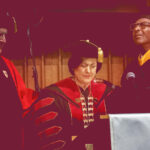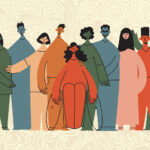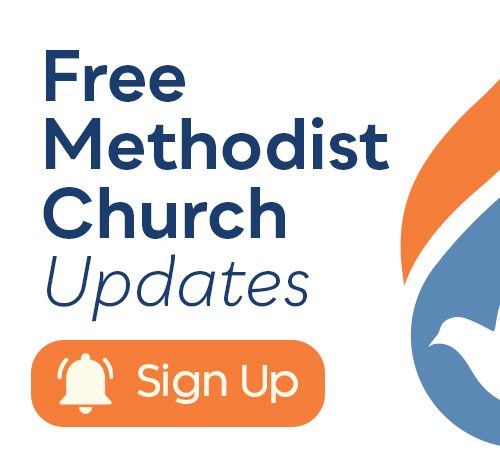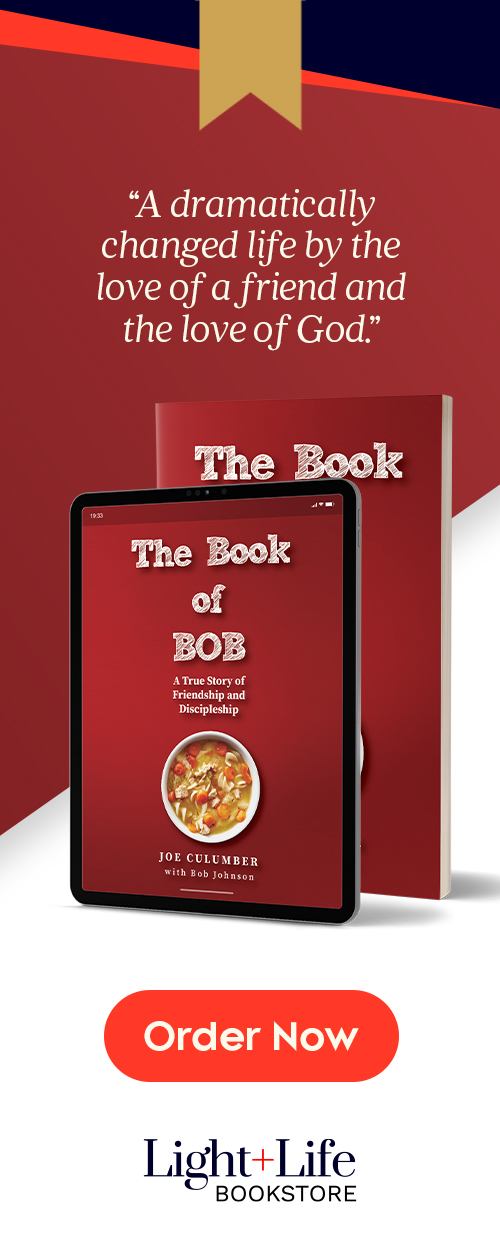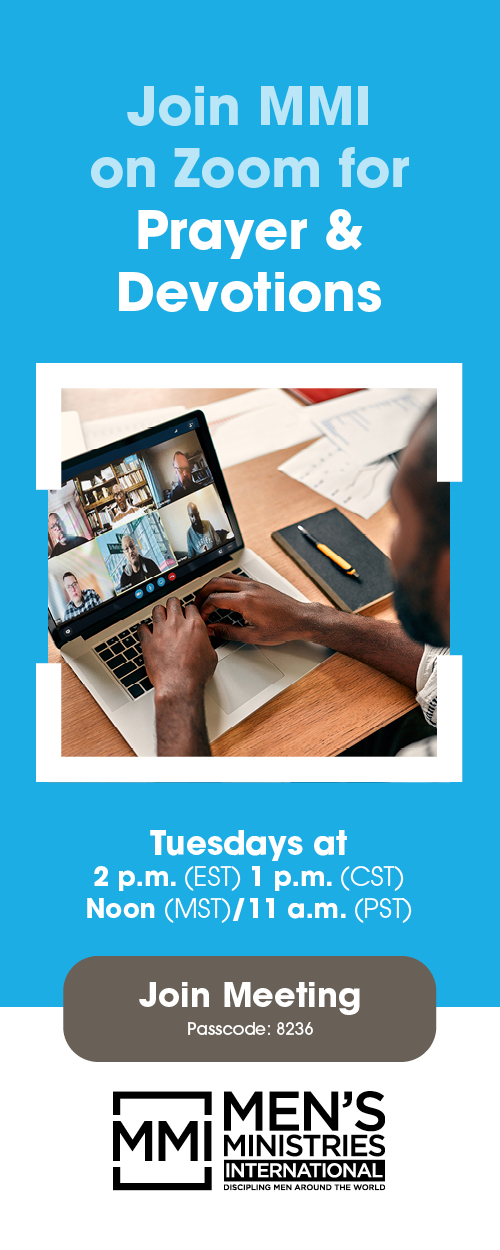
Julie Durbin
Julie Durbin, Ph.D., served as a missionary with Free Methodist World Missions in Ukraine from 2000-2010. Currently, she leads worship at New Brighton Free Methodist Church in Pennsylvania and teaches humanities at Geneva College and worship at Northeastern Seminary. She is a member of the Bishops Search Committee and the Free Methodist Liturgical Network.
By Julie Durbin
Editor’s note: Julie Durbin — a Free Methodist worship leader, Bishops Search Committee member, and former missionary to Ukraine — recently was featured in a two-part interview with The Arena blog of Current, an online journal of commentary and opinion that provides daily reflection on contemporary culture and ideas. With Current’s permission, Light + Life is sharing a condensed version of the interview. To read the full interview, click here for the first part and here for the second part.
You are currently an academic, but you have also spent a significant part of your life on the mission field in Ukraine. What was this like? What led you there, and what brought you back stateside?
I first visited Ukraine in 1999 as part of a summer-long volunteer missionary stint, and then I returned in 2000 for a commitment that extended into about 10 years.
_
“There was a lot to learn, and I had great people to watch.”
_
The summer of ’99 was my chance to find out what “real” missionary life was like, how to really live somewhere, buy your groceries, meet your neighbors, and do daily life in a place, instead of swoop in with a team and build a building or run a camp. I spent part of that summer in Hungary, where I met Jan and Jerry Coleman, who two days after I arrived, entrusted their children, their home, and their beloved Schnauzer to my care. There was a lot to learn, and I had great people to watch.
During my time in Ukraine, I worked with team members who became like family. Our task was church planting, or more specifically, growing a brand-new church community with hopes of developing more churches. We began our work near the end of the burst of mission activity in Ukraine that coincided with the collapse of the Soviet Union. There was great curiosity about all things Western, it was relatively easy for foreigners to draw a crowd, and there were needs — both spiritual and material — that created what we missionaries call an open door.
What made the opportunity inviting for me was that there was a place for anyone who was willing to be a little creative. And our team in Central and Eastern Europe consisted of people I could relate to, especially Marcie (Huson) Potts, who was our first missionary in Ukraine. She made me feel welcome and wanted, and she lived in a way that beckoned me toward maturity. She showed me the importance of going over to a new friend’s house for tea or coffee and cakes, working your hardest to communicate in a new language, and learning how to shop on your own, but also the fruitfulness — in terms of relationship-building — of asking someone for help.
_
“When I find my people, I say yes to whatever the place happens to be, and then through the people, learn how to love the place.”
_
For me, vocational moves are always begun and secured through relationships. I am always looking for my people. When I find my people, I say yes to whatever the place happens to be, and then through the people, learn how to love the place. The place is the people too.
As my place for a decade, Ukraine went from gray buildings and limited shopping choices to brightly colored grocery stores on every street. In the villages, you might see a grandmother in a horse-drawn wagon holding a cell phone. In the cities, in a high-rise apartment building, your friend might be canning bushels of tomatoes from her dacha. A third culture friend of mine has a running joke about how every missionary presentation begins: “(Insert any country) is a land of contrasts…” The textures of a land stick out to you when you are a stranger-sojourner.
I was in western Ukraine for about half the time, and in the capital city of Kyiv the other half. Even life in just those two places offered me a window into the linguistic and cultural diversity of the nation.
_
“Trust was hard to build.”
_
I taught English, led worship, did outreach Bible studies, and helped organize the work of visiting teams. There was a lot of failure along the way. Any ministry is hard, of course. But I grew to recognize that I was in a society that had experienced layers of grave tragedy and conflict. Trust was hard to build. Often I’d be working with someone for a while, and then another friend would pull me aside and say, “Hey, you need to know, it’s not pleasant to tell you, but that person you are working with is a horrible cheating human being.”
It seemed impossible — or even unwise at times — to try cultivating community when my presence and that of my colleagues introduced barriers and discrepancies in power that I was only beginning to perceive.
But I experienced sacrificial hospitality in Ukraine — and wonderful dark humor. I remember friends saying, “We Ukrainians are the most adaptable people!” And we really see it now. In the face of persistent existential threat, Ukrainians are making and remaking, building and planting, finding ever more ingenious ways to survive and even thrive. A beautiful, powerful unity in purpose is emerging, and the Ukrainian Church, while carrying a heavy burden, is growing.
What eventually brought me back stateside? Our hope as a mission team had always been to transfer leadership authority to national leaders, and we had reached that point. My colleagues and I also felt the pull back to the U.S. because of the seasons we were in personally, in our lives. I was ready to return to the community that raised me, to see if there was a place for me there again.
I’ve always been pulled in several directions. My vocation is somewhere at the intersection of academia, ministry, and the arts, and my career path has been like a dance, a very clumsy dance, lurching this way and that to allow a turn to each wing. As a missionary, I used teaching and research to connect with new communities. As a teacher, I bring my cross-cultural experience to bear on subjects and relationships in the classroom. As a worship leader, I think about the culture we cultivate with our liturgical practices.
What are your favorite classes to teach?
Ever since fall 2017 when I was invited to join the team that teaches our introductory humanities course at Geneva College, that has been my favorite. The course brings together cultural history, literature, philosophy, and theology in a pursuit of good questions, namely, what does it mean to be human and what is the good life?
_
“If God is real, so what? What questions should we then be asking about life?”
_
As a former missiology student, I’ll say the course works on gospel contextualization. If God is real, so what? What questions should we then be asking about life? In classes for my intercultural studies degree, we read about the danger — and prevalence — of shallow conversion, where the gospel doesn’t permeate to shape consciousness at the deep level of worldview. Where you get a church to start, but if people really get sick, it’s back to the witchdoctor. And that’s what happens when Christians don’t keep asking the fundamental questions of life, with great earnestness, in healthy communities.
Another favorite to teach is the worship course at Northeastern Seminary in Rochester, New York. Students who take it come from a variety of denominational and cultural backgrounds, and the course is a broad historical, theological, and practical study of Christian worship. It’s a subject I care deeply about, and it’s helpful to have a rhythm of returning to it each summer with dedicated graduate students.
I have also taught developmental reading and writing for the last 12 years. In these classes, I’ve been learning to pay attention and remember that students are people, and there are many reasons a student may need help. It’s something I must learn anew every day of every semester. My hope is to help students enter the world of words and find their place in it.
You teach writing, but you also compose music. How did this particular interest come about? What inspires you to create – whether writing or music?
I have more experience performing than composing. My aunt started teaching me piano when I was 6, my family often sang in church, and I have been leading worship in one way or another for about 25 years. In college, I learned mezzo-soprano arias, like, “Mon cœur s’ouvre à ta voix,” but also started to pick out the chords to “Zombie” by the Cranberries on my first little guitar.
Songwriting in general has been a sporadic but energizing hobby. As a child, I attempted one or two ambitious ballads meant to evangelize my imaginary hearers by covering the whole of the gospel in a few verses. They weren’t the best songs.
I finally had a little spurt of songwriting one year while I was living alone in Ukraine. I was reading “The Artist’s Way” by Julia Cameron and practicing her morning pages and artist’s dates, designed to help blocked artists feed their souls. And one day, I got a silly couplet stuck in my head: “Crows, pigeons, stray dogs and cats/are the only wild creatures who live where I’m at.” It came together with a tune, so I decided to crank out a song, feeling free to do so because it was just for fun, just silly. Later that year, I wrote a moody song about turning 33, and then I wrote another for my cousin’s wedding. I learned it was at least possible.
The impulse to make my own music was reinvigorated about a year into my marriage with Frederic S. Durbin, a novelist of speculative fiction who was finishing a book that captured my imagination. [Fred has also written for Current.] I wanted to spend more time with the characters and the world he’d created, so I started to doodle melodies on the piano, playing what developed into a kind of soundtrack. Because the story was set in an alternate 1880s, I opened my hymnal and messed with a few songs from that era. Soon, I found that similar tunes came to me, and we wrote a few hymns and songs together, what we call our “Hearken Songs” after the family name of the main characters.
More recently, I got to participate in a songwriting workshop run by Linford Detweiler and Karin Bergquist of Over the Rhine at their farm north of Cincinnati, Ohio. These workshops are an intense weekend of learning and listening with about 16 other people. Linford and Karin share their best secrets, give time for each songwriter to play and receive feedback on a song or two, and then put us in small bands to write and perform a song on the last day. It was wonderful. One piece of advice that sticks with me is “make a collection.” Always be listening for great lines, for beautiful language, for images that you can’t stop thinking about. Whether you are ready to write or not, you can always be collecting.
_
“I have learned to recognize and almost hallow creativity.”
_
On the way home, we spent a day in the city at a lovely library. There, I grabbed a few books off the shelf, and one of them was Mary Oliver’s “Upstream.” Among many others, I copied this line: “Attention is the beginning of devotion.”
What inspires me to create? It’s fun! It’s a way of tapping into my neglected soul. It feeds me with the best deep rest. Since marrying my husband and becoming friends with his friends, I have learned to recognize and almost hallow creativity. To give it space.
I’m inspired to create when I’m moved, particularly by a character I can relate to. I’m always looking for myself, and when I see a piece of myself in a character, that makes me want to absorb, dwell, think, write, paint, play melodies.
Or if I’m perturbed by something — angry, distressed, desiring to mend what feels irrevocably broken—I imagine that amazing essay I should write that would fix the world.
Two songs I’ve worked on recently reflect how inspiration or perturbation can be sources for creativity. “February Morning” was inspired by both the Asbury revival and the East Palestine train wreck. I was walking between buildings after a morning class, tired and headachy as usual, but I felt something persistent inside, a humming of spiritual expectation, and I wanted to capture it in song.
On the way home from the songwriting workshop, my husband and I wrote another one called “Shadowboxing.” I started it in a fit of frustration over the political divide, particularly in the church, and the way we can get into a pattern of demonizing others, creating monsters of our own imagining for our own temporary benefit. Such endeavors always end in death.
But our most recent song is called “Have a Carrot,” and in it, the world is put back together. We wrote it to honor my colleague at her retirement party, and the title is from “The Runaway Bunny,” which she read every semester in her lecture on adventure. We are called to adventure: a life fraught with peril to body and soul, with obligations and prohibitions, and we must make decisions and bear the consequences. But with a loving God, we are never lost, for wherever we may go, God will find us.
+

Julie Durbin
Julie Durbin, Ph.D., served as a missionary with Free Methodist World Missions in Ukraine from 2000-2010. Currently, she leads worship at New Brighton Free Methodist Church in Pennsylvania and teaches humanities at Geneva College and worship at Northeastern Seminary. She is a member of the Bishops Search Committee and the Free Methodist Liturgical Network.





